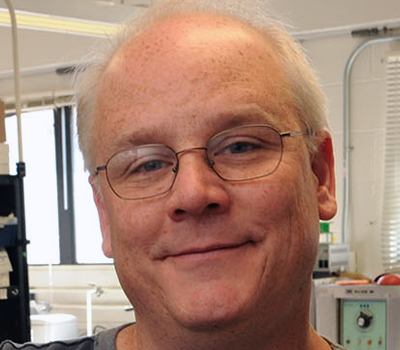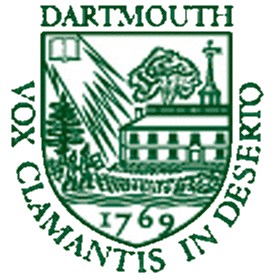Creating strategies to prevent and cure biofilm infections
We have all been exposed to biofilms in nature; in fact, life in a biofilm probably represents the predominant mode of growth for microbes in most environments. Recall a moment you had to step on a slimy rock in the bottom of a pond - or when you noticed plaque on your teeth, or when you had to clean the green stuff off the wall of your fish tank. These events all account for your encounters with biofilms, which are communities of microbes that attach to surfaces. Residing in natural, industrial, and medical settings, biofilms pose a menacing risk to human health - patients with medical implants, patients on ventilators, and people wearing contact lenses all are susceptible to biofilm infections, which are notorious for their resistance to a range of antimicrobial agents including clinically relevant antibiotics. Dr. George O'Toole, of the Geisel School of Medicine at Dartmouth, aims to understand how biofilms form on both living (airway cells) and non-living (medical implant) surfaces, and what roles biofilms play in host-pathogen interactions and resistance to antibiotic therapy.
Dr. George O'Toole's research in biofilms has critical applications in the medical setting. For example, any medical implant that goes into the human body - a contact lens, a catheter, or an artificial joint - is potentially a surface on which biofilms can form. Because biofilms are very difficult to treat with antibiotics, if a medical implant gets infected, the only option is to remove the implant which can be incredibly devastating for the patient and extremely costly. Another common example of biofilms in a medical setting is otitis media, or earache. Otitis media is a bacterial biofilm forming in the ear, especially in children, and it is the number one reason that parents miss work - as well as the number one reason that doctors prescribe antibiotics. There are also biofilms that form in the lungs of patients with Cystic Fibrosis (CF). Cystic Fibrosis is a genetic disease that impacts kids and young adults in particular, and even though the antibiotics that these patients inhale in huge doses can suppress the bacteria, they cannot eliminate infections. Thus, many individuals with CF get a chronic bacterial infection in their mid-teens and have it for the rest of their lives. The average lifespan of CF patients is now pushing to mid- to late- thirties. The big issue is that those chronic infections cause damage to your lungs to the point you can no longer breathe. By studying how microbes colonize bodily surfaces and how to prevent them, Dr. O'Toole hopes to eliminate or better treat biofilm infections and restore the patients' quality of life.
Dr. George O'Toole's lab has three major areas of focus:
-
Understanding in detail how microbes transition from a lifestyle of swimming as individual cells into biofilms: This is the most basic part of his research in understanding the mechanisms, where Dr. O'Toole and his team study single bacterial species (typical for implants) and how microbes make these biofilms and develop resistance. Understanding how biofilms form and develop resistance will provide insight into how we can prevent them from forming.
-
Using knowledge of basic theory to establish platforms for discovering new antibiotics: Whatever Dr. O'Toole learns in his lab, he applies it for practical use. For example, in trying to understand how bacteria colonize the lungs of patients with CF, Dr. O'Toole and his team have been able to grow biofilms on lung cells in the laboratory. These same biofilms on airway cells are then used to test new drugs. Dr. George O'Toole's biofilm models have been used by about a dozen companies to test their new therapeutics, and he continues to develop new surfaces resistant to biofilm colonization.
-
Understanding the biofilms in Cystic Fibrosis: This field is particularly challenging because these biofilms are polymicrobial, made up of different bacteria clustered together in a big community. There are many bacteria in these communities; some are not too bad for the patient, but some are rather malignant. This presents a really interesting and important challenge for Dr. O'Toole, as he has to figure out how to kill the ones that need to be killed effectively. By studying bacteria in a group, that behave differently than when they are on their own, Dr. O'Toole aims to understand mixed bacterial communities that are important in causing chronic infections in human patients.
Dr. O'Toole and his team are well on the road to founding a company around one of the technologies that has come out of his research to treat biofilm infections. The research in his lab has inspired 5-6 studies that have involved human patients either to learn more about how these infections work in the patients or to try new approaches to improving their health. Some of the work for the lab has led them to discover that if we can combine antibiotics with other kinds of compounds, then the antibiotics will work much better in killing the biofilms. Dr. O'Toole and his team are now working to launch a company that will commercialize this idea to combine antibiotics with other biofilm targeting molecules to kill the biofilm infection. Their goal is to synthesize molecules, test them in the lab, and then eventually use them in human patients
Bio
Dr. George O'Toole first encountered Microbiology when he took an elective course in college. He really enjoyed working with one of the TAs and ended up getting a job washing dishes in the lab. Eventually, he was given the chance to work in the lab. This first lab experience at Cornell University gave him an opportunity to study anaerobic microbes that can live without oxygen and make methane. Microbes like this live in swamps, cows' stomachs, and our guts. He loved working on problems no one knew the answers to - the process of discovery was exciting. Dr. O'Toole then went onto Wisconsin for his Ph.D. because he wanted to continue studying bacteria, and thought this university was an optimal place to do so. At the University of Wisconsin-Madison, he studied how microbes make the vitamin B12, which we need but which only microbes make, so we scavenge it from microbes in our gut. While he learned a great deal, Dr. O'Toole wanted to work on a problem with more medical relevance, and he started studying bacterial biofilms as a postdoc at Harvard Medical School.
Outside of his research, Dr. O'Toole likes gardening and has a fairly big piece of land with trees and flowers that he tends. He also enjoys cooking, especially his Italian grandmother's recipes. A second-generation Italian and a first generation Irish, Dr. O'Toole cares deeply for his family and cherishes his cultures. One fun fact to note about his family is that his wife, with whom he has two little boys, is also a microbiologist. Otherwise, he loves teaching and teaches microbiology and infectious disease courses every summer at the Marine Biological Lab for postdocs and students who come from all over the world. He also enjoys consulting and working with biotech companies and pharmaceutical companies, mostly focusing on new antibiotics targeting biofilms and chronic infections.
Websites: http://www.dartmouth.edu/~gotoole/, http://www.dartmouthbiofilmblog.org/ and http://www.dartmouth.edu/~gotoole/outreach.html
In the News
Geisel NewsCenter
Dartmouth Medicine
Geisel NewsCenter
Dartmouth Medicine
http://geiselmed.dartmouth.edu/insider/slimes-and-other-messy-science/


